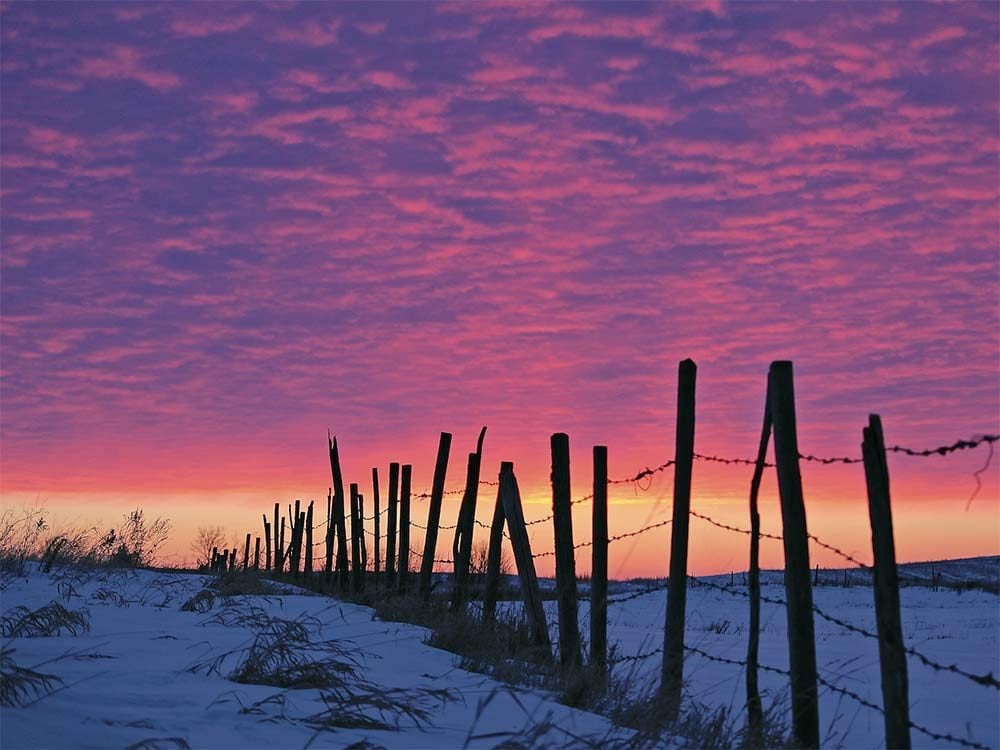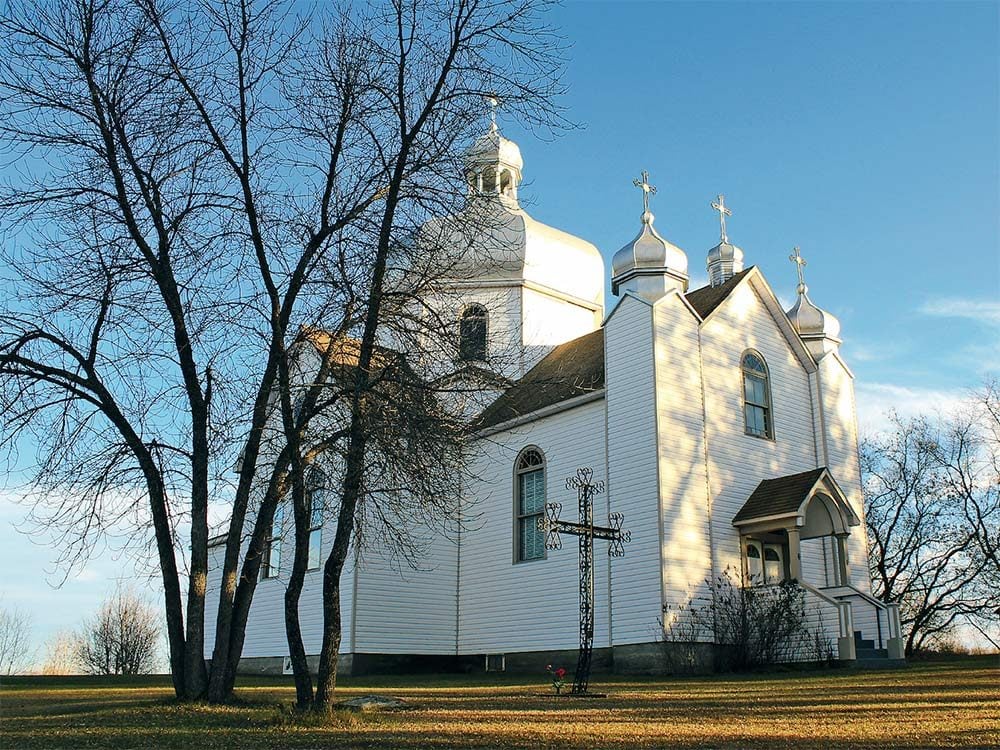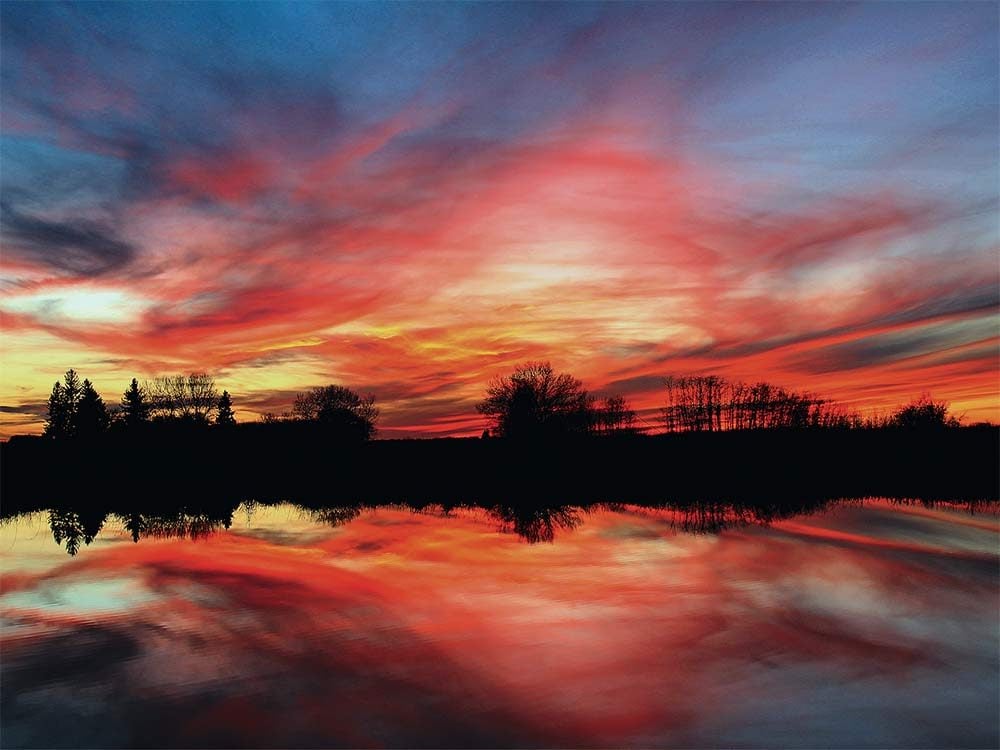
Capturing History
Beyond the flatlands that Saskatchewan is commonly known for, there are many unique treasures and history that I took for granted until I discovered photography.
My passion for photography began ten years ago when I moved back home to Saskatchewan from Alberta. I moved into Melville, which is 41 kilometres southeast of Springside in the east central portion of Saskatchewan. My fondest memories are of the family farm and Whitesand district, which is about ten miles northeast of Springside. Photographing sites from my home area became a way for me to preserve these memories.
In 1963, my grandparents decided to leave the Whitesand farm district and move into Springside. My uncle and aunt took over the family farm, and I spent a lot of time there as a child. At that time, there was no running water—it was pumped from the well. To this day, my uncle and aunt reside on the farm, but in a different home and with modern facilities. The outhouse, summer kitchen, barn and other older structures that surround the farm still remain.
Most of the pioneers that immigrated to the Whitesand district came from Ukraine, Austria and Germany. My great-grandparents who came to Canada from Ukraine, settled in that area in 1907.
Whitesand church, also known as Patronage of the Blessed Virgin Mary, is a mile north of the family farm. Under the Presbyterian clergy, the first Whitesand church was built in 1911. In 1938, they dismantled the old church and constructed a new one, and it then became a Ukrainian Greek Catholic church. My great-grandfather was one of the founders of this church. Many people assume these older churches in the countryside stand deserted; fortunately, my family church is one of few that still opens its doors for mass. Services run from spring to fall. Local priests from nearby cities still travel to some of these country churches to accommodate the remaining faithful parishioners.

Back in the Day
The congregations have dwindled through the years, and the number of people is much lower than when my ancestors were attending. As times have changed, so has the size of the families. Currently, there are 25 parishioners at Whitesand; my mother, my daughter and I still attend Mass at our family church.
Two miles east of Whitesand church was Beblo School, built in 1918. My grandparents, my mother and my aunts and uncles attended this one-room school. The teacher resided in the small house next to it. On winter mornings, the teacher would build a fire in the stove to heat the school before the students arrived. At one time, there was also a horse stable, since pupils travelled by horse or on foot to attend school. Shortly after I photographed Beblo School, it was destroyed by fire.
The first post office and store were built in the Whitesand district in 1905, but they no longer exist. The first team of horses was purchased in 1909.
When I was younger, I was intrigued by many stories my baba (grandma) shared with us. I was also saddened by the hardships they endured in those days. My baba was a spiritual woman, and her family and faith were very important to her. She was one of those people who kept everything, including old letters, which provide a lot of history and memories. When I was younger, I remember reading a letter written by my great-uncle. At that time, he was serving our country in Holland in World War II. Like many other soldiers who served in the army, he didn’t make it back home and was killed in action. That’s another reason I had an urge to photograph all the old homesteads and structures—to capture the memories and history that go with them. As time passes, more homesteads will crumble to the ground or be destroyed, and it’s disheartening to see these older structures fade away from our province.
My father, who was very passionate about photography, thought my country photos were unique. He felt I had a good eye with the camera and encouraged me to upgrade from my $100 camera to a $500 camera. He also taught me to shoot in manual mode and gave me a crash course on the basics. Shortly after that, he was diagnosed with terminal cancer, and he passed away a few months later. A couple of months after that, I picked up the camera again. I began researching online and learned more about shooting in manual mode. Once I headed to the country, I was back to where I wanted to be, and I am grateful I returned. I’m hoping my dad is looking down at me smiling, as I think of him every time I’m out there behind the lens.
This is what it was like living in Saskatchewan in the 1930s.

Hometown Beauty
My favourite photo is one I shot about a year ago of a sunset by a slough. The sky was absolutely breathtaking; it was like someone took a large brush and painted the sky. When photographing sunsets and sunrises, I’m constantly watching the sky, hoping to capture its reflections in a body of water. Who knew that being surrounded by sloughs could be such an advantage? Once I started photographing sunsets and their reflections, I began to add wild grasses, plants and cattails to the images, as I found these complemented the photos.
Obviously, I wasn’t able to capture reflections in the winter because of the freeze up, so I began including silhouettes of old rickety fence lines, grain bins or anything else that captured my eye to highlight the beautiful colours of the Saskatchewan Sky.
There were countless times when I was parked alongside the road, hazard lights on, and vehicles would stop and ask me if everything was okay. I would just smile and say, “Thank you, I’m just out here taking pictures.” I often wondered if they thought I was nuts, especially on frigid days when it was -30C or colder. There were numerous times when I’d freeze my gloved fingers to the point where I couldn’t press the shutter button any more. That was my cue, and knew it was time to pack it in. Perhaps many still view Saskatchewan as flat, never-ending land. I hope through my hometown story, family history and photos, many will embrace the beauty and history that I once took for granted. I found so much hidden beauty in travels throughout the province’s countryside, and I’m very proud to call it my home.
Next, check out these stunning shots of Saskatchewan’s ghost towns.